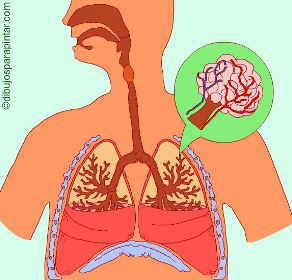Contents [show]
Lack of acid – base balance
The pH of the body
The degree of acidity of the blood and urine is a factor that is taken into account when analyzing the health of our body.
A healthy body is one that has a balance between acid and base. A pH of 7.6 in blood would show the ideal value. Values between 7 and 7.3 are quite common and indicate a “normal” functioning of our body.
When a pH is below 7, our body begins to acidify. Values between 6 and 6.5 can be responsible for many “bodily discomforts” that apparently have no explanation. “Values between 5 and 5.5 or lower can be the symptom that our body is sick.
Why does the body become acidic?

Body acidification is the direct result of the body’s own metabolic processes. The digestion of food generates acids that the body tends to filter through the liver and eliminate through the kidneys. In the same way, the respiration process also generates acids.
When the body is not able to eliminate this excess acidity, the body becomes acidic.
There are a number of factors that can aggravate acid production, such as:
- Malfunction of the excretory system (liver, kidneys, intestines, etc.).
- Malfunction of the respiratory system.
- An unbalanced diet, too rich in acidic foods and poor in neutral or base foods.
- Stress.
- Pollution (water pollution, air pollution, or food contamination).
- Smoking.
- Drinking coffee.
- Inappropriate diets. Diets rich in animal protein, such as the famous Dunkan diet, very strict diets to lose weight and other unbalanced diets lead to body acidification.
- Competitive sport: Carrying out intense physical activities, such as a competition, causes an acidification of the organism.
Consequences of acidification of the body
An excess of acidity in the body is responsible for the appearance of numerous abnormalities. Among the most significant we can point out the following:
- Continued tiredness: It seems to be as if we do not feel like doing anything. We feel tired and it takes a lot for us to regain strength.
- Lack of concentration: It is difficult for us to concentrate on a specific topic. We may have difficulties in study or at work.
- Headache: Headaches easily appear.
- Ease towards infections: Our wounds are easily infected, we have a tendency to suffer infectious diseases such as bronchitis, colds, etc.
- Joint problems: We feel pain or numbness in the joints in a habitual way.
- Heartburn: We feel that the stomach is acidic. We usually experience gastric reflux or bloating in the body.
- Allergy: Increased likelihood of allergies.
- Nail problems (brittle nails, sunken nails, etc.).
- Halitosis: The presence of bad breath is a possible symptom of an overly acidified organism.
When the body remains acidic for a long time, other more serious body problems can appear.
What to do to reduce the acidity of the body?
Excess acidity can be controlled with a proper diet that contains many fruits and vegetables and other neutral or base foods. It is considered that this type of food would have to represent 80% of all food eaten.
The ingestion of acidic foods will have to be limited, especially with regard to meat, seafood, fish and some foods of plant origin that have an acid composition such as: peas, artichokes, lentils, Brussels sprouts, corn, almonds, walnuts, hazelnuts, peanuts, etc).
Tips to reduce acidification
You will have to abandon or reduce the consumption of alcoholic beverages, coffee or sugary drinks with cola. It is also important to stop smoking and try to change certain vital habits that can lead to stress.
Regular exercise and living in a place where clean air is breathed will help reduce organic acidity that can produce environments with more polluted air. A weekly field trip will be a very interesting measure for those who live in large cities.
![]() More information on how to balance the body
More information on how to balance the body








